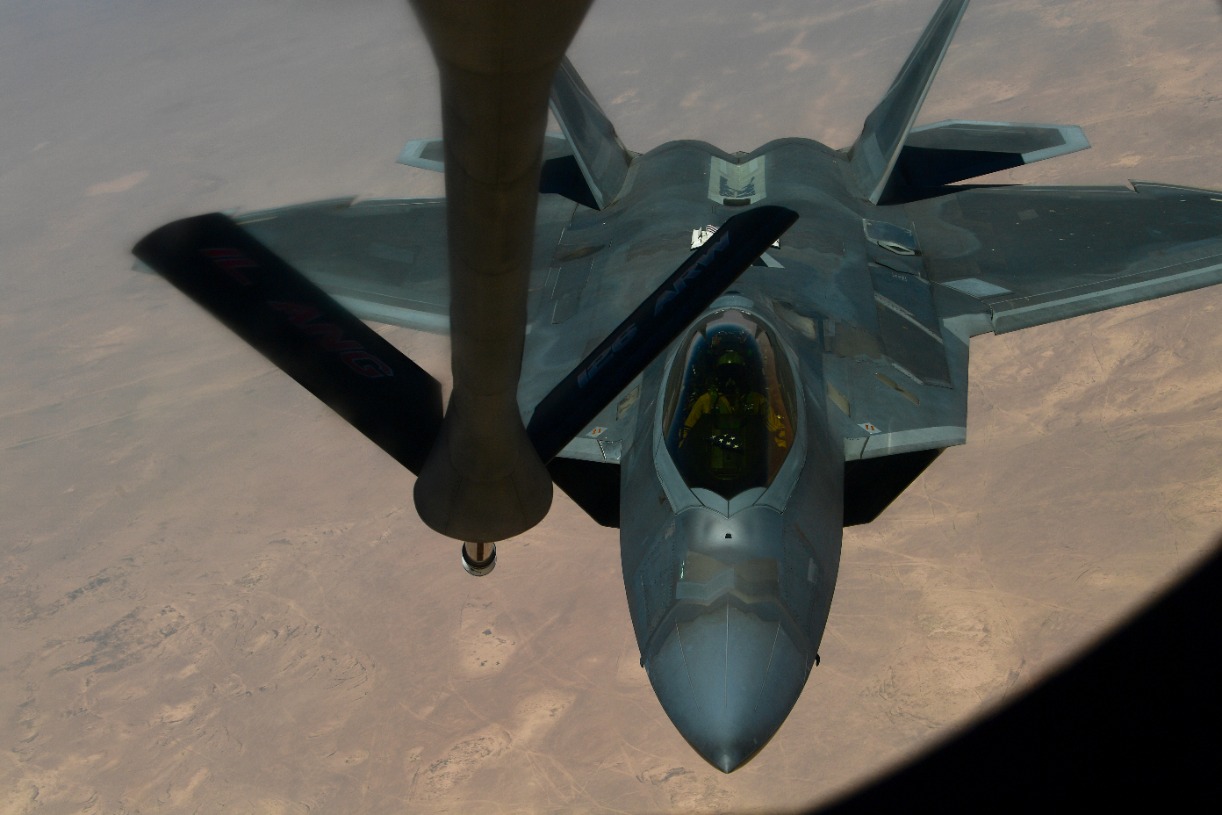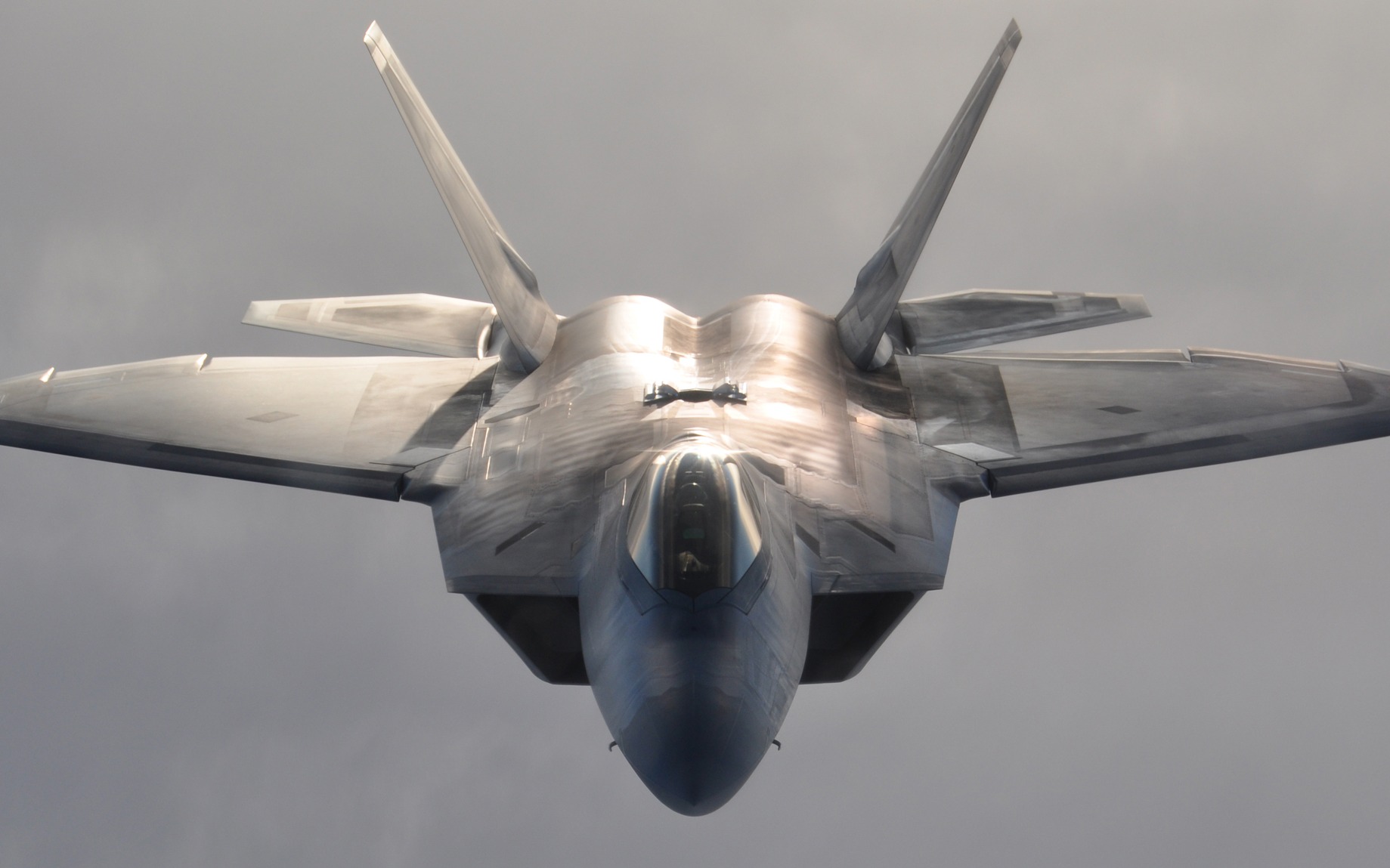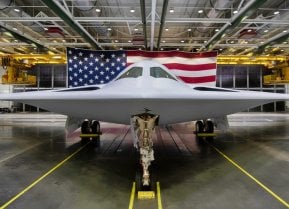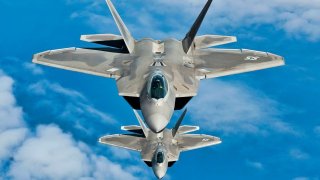The Houthis Did Not Shoot Down the F-22 Raptor over Yemen
The F-22 Raptor's incredible stealth capabilities make it improbable that the Houthi rebels could shoot one down. No Raptors have even been shot down in combat.
Was an F-22 shot down by the Houthis? The answer is no. The Iranian-backed Houthi rebels continue to exploit the ongoing Israel-Hamas war. As tensions continue to escalate in the Red Sea, the potentiality for an expanded war in the Middle East increases. This week, the Yemen-based militant group launched their largest-ever barrage of unmanned aerial vehicles (UAVs) and missiles targeting shipping and similar vessels.
F-22 Raptor Misinformation
Both American and British navies have shot down the projectiles in response. While the scope of attacks is certainly escalating, some misinformation has been circulating.
Specifically, one rumor that has dominated social media threads over the last 24-hour period claims that the Houthis shot down an American F-22 Raptor over the Red Sea.
This speculation is unfounded and has been denied by the U.S. military. However, the Iranian-backed group has pledged revenge on American and British troops for their retaliatory strikes.
An overview of Red Sea tensions
The Islamic Republic of Iran’s proxy network extends from Lebanon, Gaza and Yemen to Iraq and Syria. In fact, evidence indicates Tehran aided and abetted Hamas’ October 7 massacre against Israel.
These groups were emboldened following the Gaza-based group’s successful breech and slaughter of more than 1,200 on that deadly day.
The U.S. immediately sent over two carrier strike groups to the eastern Mediterranean in October in order to deter Iran’s proxies and affiliates from entering the war. However, the Houthis and Lebanon-based Hezbollah groups have not been dissuaded.
While Hezbollah continues to barrage northern Israel with missiles and drones, the Houthis have increased attacks in the Red Sea. Since November 19th the group has carried out at least 27 attacks.
This week, the U.S. Navy warned American-flagged vessels from avoiding areas around Yemen in the Gulf of Aden and the Red Sea for 72 hours as U.S. and Britain carried out several airstrikes targeting the Iranian-backed group.

According to U.S. officials, the bombing targeted more than 6 targets in 16 different locations across Houthi-controlled swaths in Yemen. The Pentagon also confirmed that Tomahawk missiles were launched from the Ohio-class ballistic missile submarine USS Florida and other U.S. Navy surface ships. Amidst the bombardment, rumors began to circulate that a F-22 Raptor was shot down.
In response to this allegation, Voice of America’s Pentagon correspondent and news anchor Carla Babb published a statement on Twitter (now X): "US defense official tells me no US F-22s have been shot down tonight, no US warships have been hit nor has the US embassy in #Baghdad been targeted Just thought I'd knock down all the rumors at once. #RedSea #Houthis.”
Introducing the F-22 Raptor
Since its introduction to service decades ago, the F-22 Raptor remains a cornerstone of air superiority for the U.S. military. As the world’s first ever fifth-generation fighter to ever take to the skies, the Raptor is still considered to be one of if not the best jets in existence. Even the newer and technically more advanced F-35 Joint Strike Fighter stands behind the Raptor concerning certain capabilities.

Notably, the F-22 has a smaller radar cross-section than its successor, making the platform even more challenging for enemy aircraft to detect. In terms of speed, the F-22 also has the Joint Strike Fighter beat. While the former can fly at top speeds reaching Mach-2.2 (2.2 times the speed of sound) powered by its Pratt & Whitney F119 engines, the latter can comparably only fly at a maximum speed of Mach-1.6 powered by its single Pratt & Whitney F-125 engine.
The F-22’s incredible capabilities make it improbable that the Houthi rebels could shoot one down. No Raptors have even been shot down in combat.
If they can’t shoot down a F-22 Raptor, what are the Houthis capable of?
While the Houthis are probably not capable of taking out a leading fifth-generation fighter, the group is still well-equipped thanks to their most prominent supporter - Iran. Similar to the Gaza-based Hamas terror group and Lebanon-based Hezbollah terror organization, the Houthis receive training, funds, and other forms of aid from Tehran. Following the takeover of Yemen’s Sana’a capital back in 2014, Iran’s contributions to these Yemen-based “rebels” grew steadily to include the transfer of weapons.

As detailed by War on the Rocks, “They assemble these parts into working weapons with technical assistance from Hezbollah and Islamic Revolutionary Guard Corps advisers. This approach has allowed the Houthis to now field short and long-range drones and an increasingly diversified fleet of missiles capable of striking deep inside Saudi Arabia.”
The Houthis have shown time and time again that they are capable of attacking shipping and other vessels in the Red Sea, stirring regional escalation. The rebels have also carried out drone and rocket barrages targeting critical infrastructure in the UAE and Saudi Arabia in the past.
Additionally, the group has not heeded America’s suggestion not to enter the conflict in the Middle East.
About the Author: Maya Carlin
Maya Carlin, National Security Writer with The National Interest, is an analyst with the Center for Security Policy and a former Anna Sobol Levy Fellow at IDC Herzliya in Israel. She has by-lines in many publications, including The National Interest, Jerusalem Post, and Times of Israel. You can follow her on Twitter: @MayaCarlin. You can email the author: [email protected].
All images are Creative Commons.


